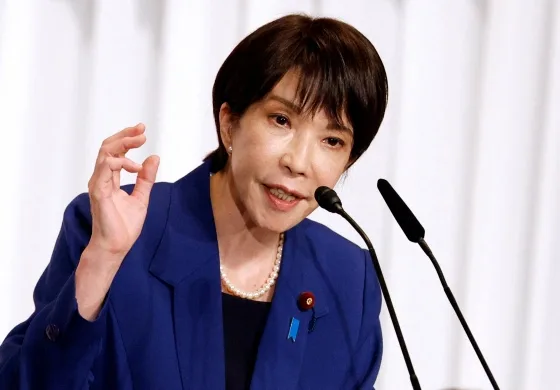Over my 40 years in Japan, I have watched the country move through cycles of reform and retreat, modernization and retrenchment, each one teaching the same lesson. Japan does not change until it must, but once it does, it rarely turns back.
Now, with Prime Minister Sanae Takaichi and a newly formed LDP and Ishin coalition government, Japan may be entering another period of tightening before transformation. Takaichi’s “Japan First” message and emphasis on self-reliance resonate with many voters, yet her government’s stance toward immigration and foreign labor is more restrictive than that of her predecessor, Shigeru Ishiba. At precisely the moment when the country needs openness, it is pulling inward.
The Numbers Do Not Lie
Japan’s working-age population continues to fall by more than 600,000 people a year. Labor shortages have become permanent in logistics, caregiving, food service, manufacturing, and construction.
There are now over two million foreign workers in Japan, the highest number in history, but still far short of what is needed. Factories can automate, but hospitals, hotels, and farms still depend on human hands. Robots can assist, but they cannot replace empathy or judgment.
Business Sees What Politics Cannot
Corporate Japan already knows the answer. A recent Nikkei survey found that 98% of business leaders support expanding foreign worker programs, especially in technical and professional fields.
Executives see what policymakers prefer to postpone. Without foreign labor, Japan’s logistics chains, care facilities, and service sectors will break down.
Convenience store chains such as Lawson and FamilyMart rely on international staff for roughly one fifth of operations. Construction and manufacturing firms have built multilingual training systems for Vietnamese and Indonesian workers. Rural governments have opened multilingual community offices because foreign residents are no longer temporary. They are essential.
Adaptation Without Admission
This quiet adaptation is a familiar Japanese pattern. Official statements resist change while everyday life forces it. Japan has long practiced reform before declaring it.
When foreign credit cards were rarely accepted, banks built the systems quietly before any policy shift. When remote work was dismissed as impractical, companies adopted it during the pandemic and never went back.
Immigration will follow the same path. The gap between rhetoric and reality will widen until necessity forces them to meet.
A Step Back Before the Step Forward
Still, there is a real risk of regression. With Takaichi’s conservative bloc and the Ishin alliance emphasizing national identity and tighter border control, Japan could see stricter visa screening, slower expansion of the Specified Skilled Worker program, and a renewed focus on “temporary” labor rather than integration.
This would not be the first time Japan has stepped backward before moving forward. Education reform, digital policy, and energy strategy have all followed the same pattern: hesitation, adjustment, and then rapid correction once economic pressure builds.
Businesses cannot run on ideology. And the math will not wait.
Immigration Policy: The Other Side of the Problem
At the same time, Japan’s immigration system does need updating. Some visa categories were created in good faith but are now being exploited in ways that undermine trust in the system.
The Business Manager Visa, designed to attract genuine entrepreneurs, became one of the most abused. Until recently, an applicant could gain residency by investing as little as five million yen in their own company, a small sum by global standards, and many established shell firms that existed only on paper.
In 2025, Japan’s Immigration Services Agency announced it would raise the capital requirement to thirty million yen, require proof of active operations, and demand at least one full-time Japanese employee. Officials cited a rise in fraudulent applications, misuse of the visa for residency rather than business, and what one policy forum described as “a class of fake wealthy CEOs” living in Japan without real commercial activity.
There are also concerns about chain immigration, dependents and relatives arriving under generous family allowances without clear means of contribution or integration. Local governments have reported cases of people accessing healthcare and education systems while remaining outside the labor market.
These are not the majority, but they fuel political backlash and give ammunition to those arguing for blanket restrictions. Tightening oversight here is necessary. A sustainable system must reward contribution and integration, not loopholes.
The Cultural Balancing Act
Japan’s hesitation about immigration is not only rooted in fear of disruption. There is, in fact, a measure of hostility. A vocal segment of the population believes that foreign labor threatens social order and national identity.
Social media, once apolitical in tone, now hosts regular debates about “burden” versus “benefit,” and some local communities openly resist new foreign residents.
But such attitudes coexist with Japan’s deep sense of fairness and its growing recognition that the future cannot be sustained alone.
This country’s success has always come from adapting without chaos, from finding stability within change.
Where This Is Headed
Policy may still lag behind practice. Under the current coalition, the tone may grow more cautious before economic need forces it to soften. Companies will keep hiring abroad. Rural towns will keep relying on foreign workers to stay alive.
Reality has already passed regulation.
A Quiet Realization
Japan does not need to abandon its identity to survive. It simply needs to recognize that inclusion and stability are not opposites.
Foreign workers are not a temporary fix. They are part of Japan’s continuity. But before embracing that future, the country may pause, tighten, and look backward once more.
Change in Japan rarely moves in straight lines. It comes in quiet waves of retreat, reflection, and then renewal — until forward is the only direction left.

